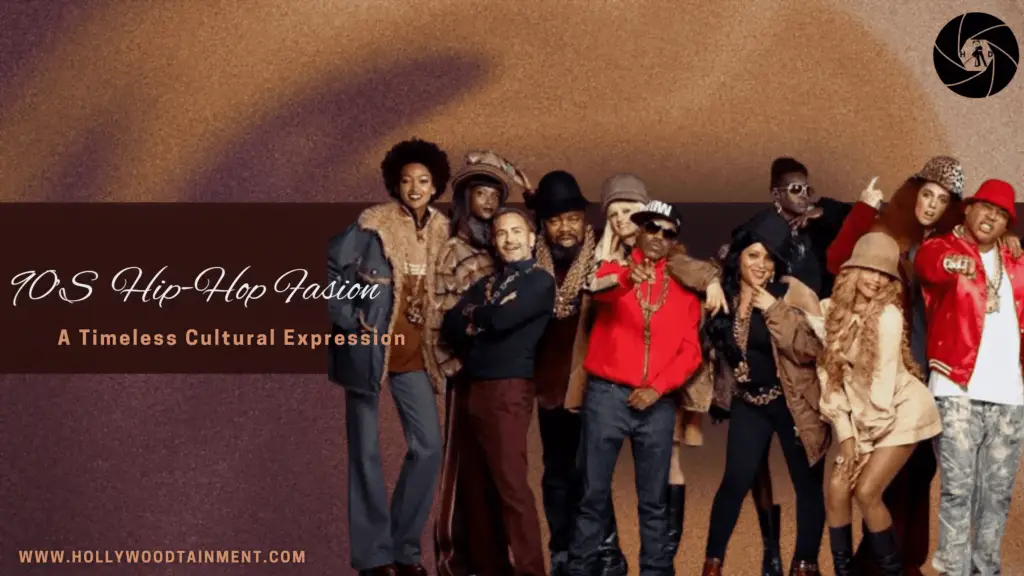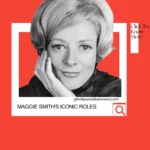Hip hop culture was at its height during the dynamic and transformative 1990s, giving birth to an unmistakable fashion movement that would leave an indelible mark on global fashion. 90s hip hop fashion was more than clothing; it represented the cultural identity and spirit of its time. From baggy jeans to oversized hoodies, this article examines iconic fashion trends of this era, their influences, and their lasting effect on contemporary fashion trends.

Introduction
The 90s hip hop fashion movement emerged as an aesthetic representation of African-American cultural identity and expression, taking cues from street culture, graffiti art, and the lyrics and attitudes expressed through hip hop music. With its bold yet distinctive styles, 90s hip hop fashion became an expressive way of proclaiming individuality while creating bonds among members of its community.
Influences of 90s Hip Hop Fashion
African-American Cultural Identity
At its core, 90s hip hop fashion was deeply rooted in African-American cultural identity, celebrating and reflecting its individual experiences, struggles, and aspirations. This fashion movement offered African-Americans an outlet to assert their presence and demand recognition while often challenging societal norms through clothing choices.
Street Culture and Graffiti
Street culture was an influential force in shaping 90s hip hop fashion. The gritty urban environment provided the backdrop for creative expression, while graffiti art, with its bold colors and intricate designs, served as a visual stimulus for clothing styles. Street culture’s rebellious yet raw energy could often be found reflected in hip hop artists and enthusiasts’ attire choices.
Music and Lyrics
Hip hop musicians played an influential role in shaping fashion trends during the 90s. Artists such as Notorious B.I.G, Tupac Shakur, and A Tribe Called Quest set fashion trends through music videos and performances while shaping the sound of that decade; in doing so, they also left an indelible mark on fashion throughout that era. Through their distinctive styles, they inspired generations of fans.
Iconic Clothing Pieces of 90s Hip Hop
Fashion trends of the 1990s hip-hop era were defined by their distinct and bold aesthetic, featuring numerous iconic clothing pieces which became hallmarks of hip hop culture and had their own symbolic status.
Baggy Jeans and Cargo Pants
One of the defining characteristics of 90s hip hop fashion was its emphasis on baggy jeans and cargo pants, providing both style and functionality during that era. Baggy jeans, often worn low on the waist, became iconic symbols of hip hop style.
Oversized T-shirts and Hoodies
Oversized T-shirts and hoodies were an iconic element of 90s hip hop fashion. These loose-fitting garments featured bold logos, graphic prints, or artistic designs to give a nonchalant and casual aesthetic that gave an uninhibited vibe.
Tracksuits and Windbreakers
Tracksuits and windbreakers were popular choices for casual wear as well as performance apparel in hip hop fashion, often made of shiny materials with vibrant hues that could become synonymous with hip hop style. Meanwhile, windbreakers, with their distinct sporty aesthetic, provided stylish layering options that added dimension to outfits.
Key Fashion Accessories
Accessories were an integral component of 90s hip-hop fashion and played an instrumental role in shaping its trends.
Snapback Caps
In the 90s hip hop era, snapback caps were an increasingly fashionable and functional part of everyday wear. Boasting adjustable snaps at the back for customization and style, snapback caps added an element of individuality and personality to every ensemble they adorned. From team logos or brands emblazoned on them to funny phrases on them, snapback caps were an essential accessory.
Gold Chains and Jewelry
Gold Chains and Jewelry Hip hop fashion was synonymous with gold chains and jewelry, often serving as symbols of wealth, success, and personal style. Hip hop artists frequently donned chunky gold chains with large pendants or extravagant rings as a statement about their status or identity – an affirmation of wealth or status or an expression of personal expression.
Timberland Boots
Timberland boots became an integral part of the 90s hip hop fashion scene due to their rugged yet versatile construction, offering both style and function. Worn unlaced or with loose jeans, Timberland boots added urban flare to outfits.
Current Fashion is heavily influenced by influences of contemporary fashion
The influence of 90s hip hop fashion extends well beyond its own era, continuing to have an effectful legacy today. Elements of its style have been adopted and adapted by designers and fashion brands worldwide – from streetwear labels to high-end fashion houses, from streetwear labels to runway collections – cementing its place in fashion history.
Fashion Brands and Designers
In the 90s, many fashion brands and designers emerged that were inspired by hip hop culture to meet its fashion demands. Names such as FUBU, Sean John, and Karl Kani became household names by offering clothing lines that captured its essence while providing fashionable options that empowered individuals to express themselves through clothing.
The Legacy of 90s Hip Hop Fashion
The legacy of 90s hip hop fashion lives on today; its influence can be felt across popular culture, music, and fashion alike. This cultural movement created space for diverse voices while unifying people through the celebration of self-expression. Even now, we can see its influence echoed through contemporary styles – reminding us all of its timeless appeal and cultural importance during an otherwise transformative era.
Megan Fox Transformers: The Hollywood Stardom
Top 7 Trends & Brands of ’90s Hip Hop Fashion
Influence of 1990s Hip Hop Fashion
Hip hop fashion made a profound mark on popular culture during the ’90s, revolutionizing style norms and inspiring countless individuals. Here is an exploration of some key trends from this period.
- Baggy Clothes and Oversized Silhouettes
One distinctive trait of ’90s hip hop fashion was its preference for baggy clothes and oversized silhouettes, often used as a symbol of rebellion or individualism by rappers and artists alike. Baggy jeans, loose-fitting t-shirts, and loose hoodies became iconic staples during this era.
- Streetwear and Sneakers
The advent of streetwear culture was coinciding with the rise of 1990s hip hop culture. Brands such as FUBU, Phat Farm, and Karl Kani became immensely popular, while sneaker brands like Nike and Adidas produced sought-after styles worn by rapper icons.
- Bold Logos and Branding
During the 1990s hip hop fashion scene, brands like Tommy Hilfiger embraced bold logos as a form of self-expression through logos like its prominent flag logo. This trend had an influence beyond Tommy Hilfiger alone; other fashion labels also encouraged logo display as status symbols.
- Headwear: Hats and Beanies
Hats and Beanies Hats were an integral component of 1990s hip hop fashion. Kangol hats, bucket hats, fitted caps, and various angles of Kangols were all worn at various angles to express an air of attitude or personal style; beanies became especially fashionable among artists like Tupac Shakur and Notorious B.I.G.
Iconic 90s Hip Hop Fashion Brands
Numerous brands dominated the 1990s hip hop fashion scene and remained associated with their distinct style.
- FUBU- FUBU (For Us, By Us), founded by Daymond John in 1979 as an iconic brand known for its urban aesthetic and inclusive message, became a landmark within hip hop community.
- Tommy Hilfiger- Tommy Hilfiger rose to immense popularity during the ’90s due to its connection with hip hop culture and artists wearing its red, white, and blue logo proudly, solidifying its place within fashion’s cultural consciousness of that period.
- Karl Kani- Karl Kani pioneered urban fashion through his revolutionary brand. Renowned for his groundbreaking designs and bold hues, Karl’s clothing captured the essence of ’90s hip hop fashion perfectly.
- Cross Colours- Cross Colours was founded by Carl Jones and TJ Walker to foster Afrocentric aesthetics and social activism within hip hop culture. Their colorful designs quickly gained widespread acclaim among hip hop community members while simultaneously spreading positive messages through fashion.
- Phat Farm- Launched by Russell Simmons, Phat Farm was an iconic representation of 90s hip hop fashion. Offering clothing with style, comfort, and attitude that resonated with a broad demographic.
- Wu-Wear- Wu-Wear was an iconic clothing line associated with Wu-Tang Clan’s influential hip hop group. Their iconic “W” logo and unique designs earned a loyal following and helped the group establish a cultural impact.
- Sean John- Sean John was established by Sean “Diddy” Combs to bridge luxury and streetwear aesthetics, quickly becoming an icon of 90s hip hop fashion.
Revival of ’90s Hip Hop Fashion
Hip hop fashion from the 1990s continues to influence modern fashion trends even today, serving as an influential source.
- Influence of ’90s Hip Hop Fashion on Contemporary Fashion
Traces of hip hop fashion from the ’90s can still be found today in streetwear and casual wear; oversized clothing, logo-driven designs and the return of retro sneakers all nod towards its iconic aesthetic from that period.
- Pop Culture References
Pop Culture References Movies, television shows and music videos often pay homage to ’90s hip hop fashion and introduce it to new generations. Artists and celebrities frequently incorporate vintage pieces or reinvent iconic looks from this period into their style, helping keep its legacy alive.
Conclusion
90s hip hop fashion was an unparalleled cultural movement that left an indelible mark on fashion history. Embodying elements of African-American community culture, street life, and hip hop music, creating a unique aesthetic that still influences today. The boldness, individuality, and self-expression that defined this era’s fashion choices still resonate today – helping define contemporary fashion trends.
How did baggy jeans become popular in 90s hip-hop fashion?
Baggy jeans became popular in 90s hip hop fashion due to their association with street culture and the desire for a relaxed and comfortable style. Hip hop artists and enthusiasts embraced baggy jeans as a symbol of rebellion and self-expression.
Who were some influential figures in 90s hip hop fashion?
Some influential figures in 90s hip hop fashion include Notorious B.I.G., Tupac Shakur, Missy Elliott, TLC, and Aaliyah. These artists not only influenced the music scene but also set fashion trends and became style icons.
What other subcultures influenced 90s hip hop fashion?
Apart from street culture and graffiti, other subcultures that influenced 90s hip hop fashion include skateboarding, basketball, and punk rock. These subcultures brought their unique styles and attitudes, blending with hip hop to create a diverse and eclectic fashion movement.
How did 90s hip hop fashion impact mainstream fashion?
90s hip hop fashion had a significant impact on mainstream fashion, influencing designers, brands, and consumers worldwide. Elements such as baggy clothing, bold prints, and streetwear aesthetics became mainstream trends, reflecting the enduring popularity of hip hop culture.
Are there any fashion trends from the 90s hip hop era that are still popular today?
Yes, several fashion trends from the 90s hip hop era remain popular today. Baggy jeans, oversized T-shirts, tracksuits, and accessories like snapback caps and gold chains continue to be embraced by fashion enthusiasts, ensuring the legacy of 90s hip hop fashion lives on.
How can I incorporate ’90s hip hop fashion into my wardrobe?
Start by experimenting with baggy clothes, oversized silhouettes, and streetwear brands. Mix and match vintage pieces with modern staples to create your unique interpretation of the style.
What accessories were popular in ’90s hip hop fashion?
Hats, beanies, and sneakers were essential accessories in ’90s hip hop fashion. Experiment with different headwear styles and invest in iconic sneakers to complete your look.
Can I mix ’90s hip hop fashion with other styles?
Absolutely! ’90s hip hop fashion can be incorporated into various styles, allowing you to create unique and personalized looks that blend different fashion influences.






